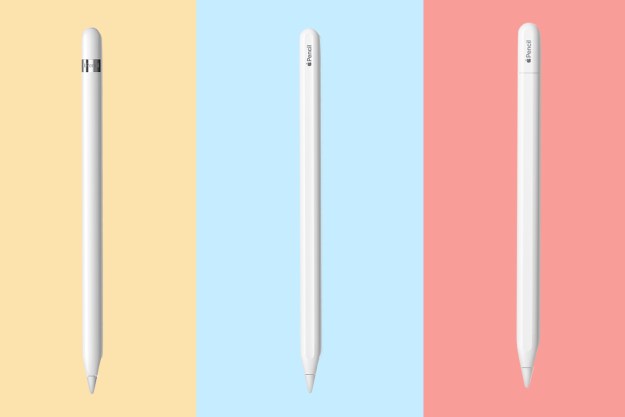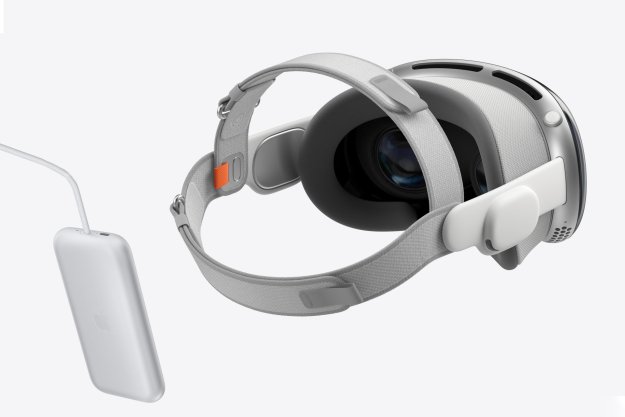Apple’s new Vision Pro is more than triple the price of Meta’s premium VR headset, the Quest Pro. Is the Vision Pro really worth the extra expense, or will you be just as happy with a Quest Pro and thousands of dollars left in your pocket? You might be surprised at the answer.
Quality is a great way to justify a high price. Meta and Apple each boast advanced designs, better displays, fast performance, and greater comfort than mainstream headsets. When comparing which is the best VR headset, you should consider all of these details. Which aspects are most important depends on how you anticipate using the device.
A small disclaimer is in order before getting into the comparison. The Meta Quest Pro launched in October of 2022 and has since had a significant price drop, while Apple only recently announced the Vision Pro with the release in 2024, and some details are still unknown. We’re basing this head-to-head on currently available information.
Best comfort
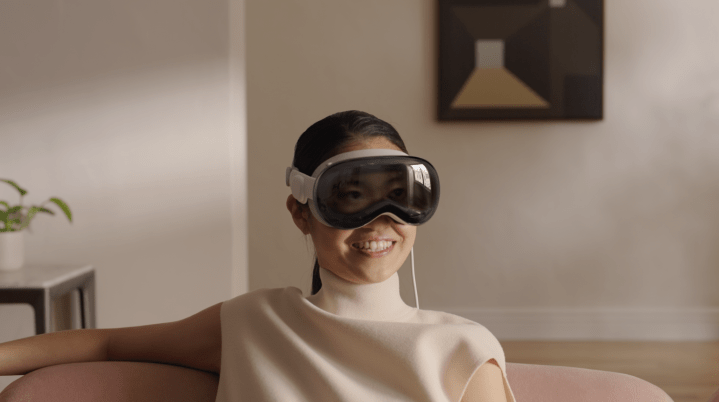
A premium VR headset should be comfortable enough to watch a full-length movie or play an immersive game, then do something productive without taking a break. If your expensive headset becomes painful after an hour, you’re not getting good value, and it might be time to look for a remedy or a new model.
When Meta announced the Quest Pro, the company emphasized its improved comfort. Most notably, the part of the device that usually presses against your face, known as the facial interface, was opened up.
When wearing a Quest Pro, you can glance down to see a keyboard as you’re typing or your feet and see below the edge of the headset to avoid stepping on a friendly cat when gaming. You also enjoy natural peripheral vision, preventing crashing into someone approaching from the side. It’s quite convenient in that regard.
The airiness is more comfortable than a Quest 2 and most other VR headsets that begin to feel warm and stuffy in a hurry. If you have sensitive skin, taking the weight off your cheeks makes VR much more enjoyable.
Unfortunately, Meta failed with the head pad. It fits great for some, works okay for many, but the Quest Pro proves too painful for others to use for more than a few minutes. It depends on the shape of your forehead. I fell into the “OK” group and added a little neoprene to make it conform to my head better. My forehead toughened up over time, so I removed the neoprene. Some users add a Velcro strap across the top to ease forehead pressure. It’s not ideal, but it works.
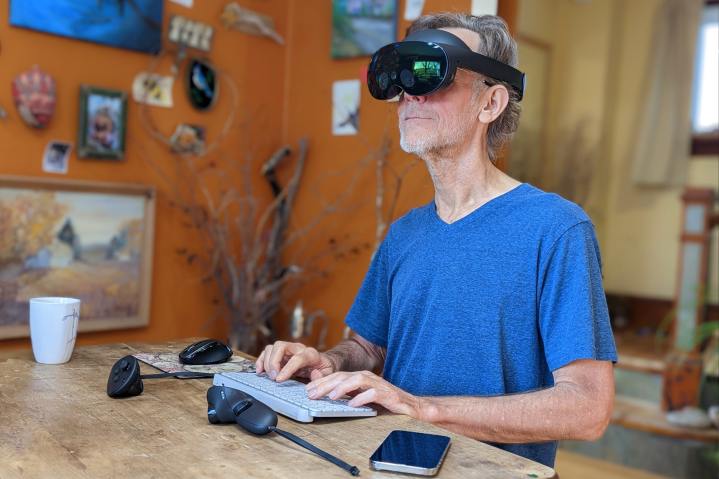
Apple seems to have placed an even greater focus on comfort. While I can’t say for sure until I get an opportunity to try the Vision Pro, several features suggest you might be able to wear Apple’s headset for several hours.
While Apple’s Light Seal, the facial interface, isn’t open, it appears to be breathable, and early hands-on reports agree. Apple mentioned in its presentation that it studied head shapes and chose a solution flexible enough to provide a good fit.
The Meta Quest Pro has been thoroughly tested and survives hours of rigorous workouts in Supernatural, FitXR, and intensive gaming. Apple’s Vision Pro comes with a stretchy, breathable headband that’s removable, and the headset looks well made. It might withstand similar punishment, but that remains to be seen.
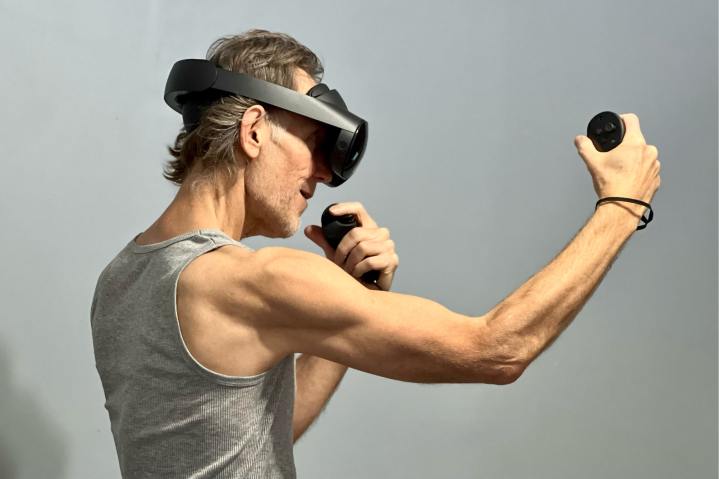
Apple didn’t mention its Fitness+ workout program during the headset announcement, so it’s unclear if the Vision Pro is a good solution for fitness or even for fast-paced VR games that require rapid head movement.
I’ll score this one a tie since the Quest Pro is a known quantity, and there are easy solutions to its forehead pad. Apple might be more comfortable right out of the box, but it lacks an open facial interface.
Display quality
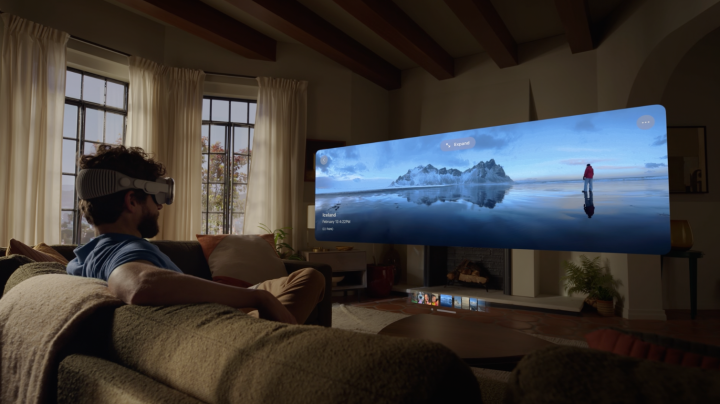
Apple’s Vision Pro has outstanding display resolution. It’s the sharpest consumer VR headset yet. Early reviews suggest the lens clarity is exceptional. With more than double the number of pixels available in the Quest Pro, it will undoubtedly offer a crisper image.
The Meta Quest Pro features mini-LED backlighting, providing truer blacks and a wider dynamic range of brightness. Apple uses mini-LED technology in its 12.9-inch iPad Pro and some MacBook Pro models. It’s a great solution, but OLED is better.
Apple’s Vision Pro uses micro-OLED displays for a pure black that’s controllable at the pixel level. The Vision Pro’s HDR will outperform Meta’s solution. This will be most noticeable in high-contrast areas with fine details.
Apple has a big display quality advantage over Meta and every other VR headset manufacturer. If the only consideration was display quality, the Vision Pro is clearly the winner.
Performance

Meta gave the Quest Pro a faster processor than the Quest 2, upgrading from an XR2 to an XR2+. This extra performance helps, but it’s still a chip based on a mobile processor. It works well for the games and apps that are available. For more demanding games and apps, you can connect wirelessly to a Windows PC with a discrete GPU and get good responsiveness while seeing a higher-quality image.
Apple’s Vision Pro features an M2 processor, the same type of chip used in Mac computers, MacBooks, and the iPad Pro. Even if Apple throttles the chip to keep heat down, it will be much faster than Meta’s headset.
A fast PC with a top GPU would outperform the Vision Pro in benchmarks, but Apple’s headset will still offer sharper graphics than Meta’s. Apple’s Vision Pro can connect to a Mac, so the point is moot.
This is another win for Apple, which is to be expected at the much higher price.
Price
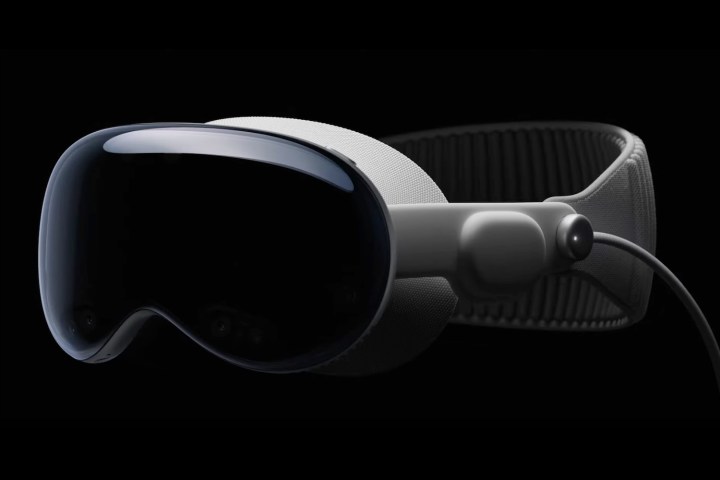
Price is the bottom line for most people. If you can’t afford Apple’s Vision Pro, the Meta Quest Pro is a good choice, particularly with the recent price drop. If you’re on the fence and looking for ways to justify purchasing a $3,500 headset, it has incredibly advanced hardware throughout. It’s absolutely worth the cost of the components.
Whether the Vision Pro is worth $2,500 more than the $1,000 Quest Pro is a more difficult decision. Meta cut the price of its headset to the bone. It’s a fantastic value.
To make this difficult choice, consider how you’ll use the headset. Apple makes the distinction that the Vision Pro is a spatial computer, not a game machine and, thus far, makes no mention of fitness apps.
In contrast, Meta describes the Quest Pro as a productivity headset, but it’s the VR leader’s best gaming device as well. It’s also great for fitness apps, and the open periphery prevents sweat from collecting in the headset and around your eyes.
Which is right for me?
Apple’s Vision Pro will be better for media consumption with its crisp displays and offers improved productivity with higher-resolution virtual monitors and faster performance. Apple Arcade provides 2D gaming, but Apple failed to mention VR games.
The Vision Pro’s mixed-reality mode also appears to be better and it has the unique ability to show your eyes to others even when you wear the headset with EyeSight, Apple’s reverse passthrough.
If you want to game and work out in VR while checking websites and connecting to a PC for a brief work session, the Meta Quest Pro handles that well and at a relatively low price.

If personal cinema is important to you and you’re well ensconced in the Apple ecosystem, with enough disposable cash for the Vision Pro, it might be the right choice. The Vision Pro is technically an excellent mixed reality headset with technology that eclipses every competitor.
The app landscape is meager in the short term, even with iPad app compatibility, but the device won’t launch until early 2024. By that time, there might be big game announcements and high-powered apps that take advantage of the potential.
For now, Meta’s Quest Pro is available and inexpensive for a high-quality VR headset. It’s a better choice for most people. As we learn more about the Apple Vision Pro, more use cases might arise that make it easier to justify such a high price.
Editors' Recommendations
- Quest Pro 2: What we know about Meta’s next premium VR headset
- Meta Quest 4: Here’s what we want from the next big VR headset
- How to try out the Vision Pro headset yourself
- Vision Pro 2: everything we expect from the future of Apple’s headsets
- We have some bad news for Quest owners



